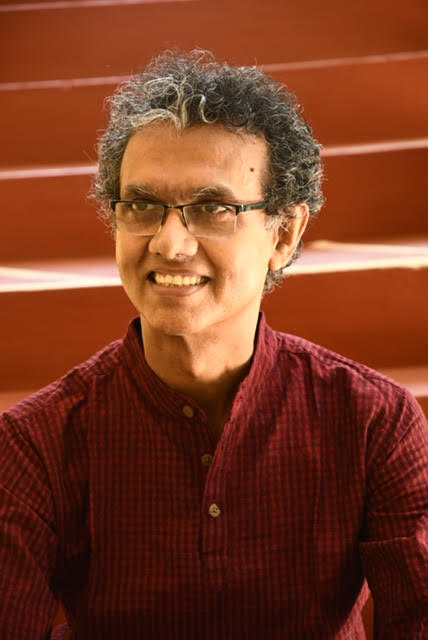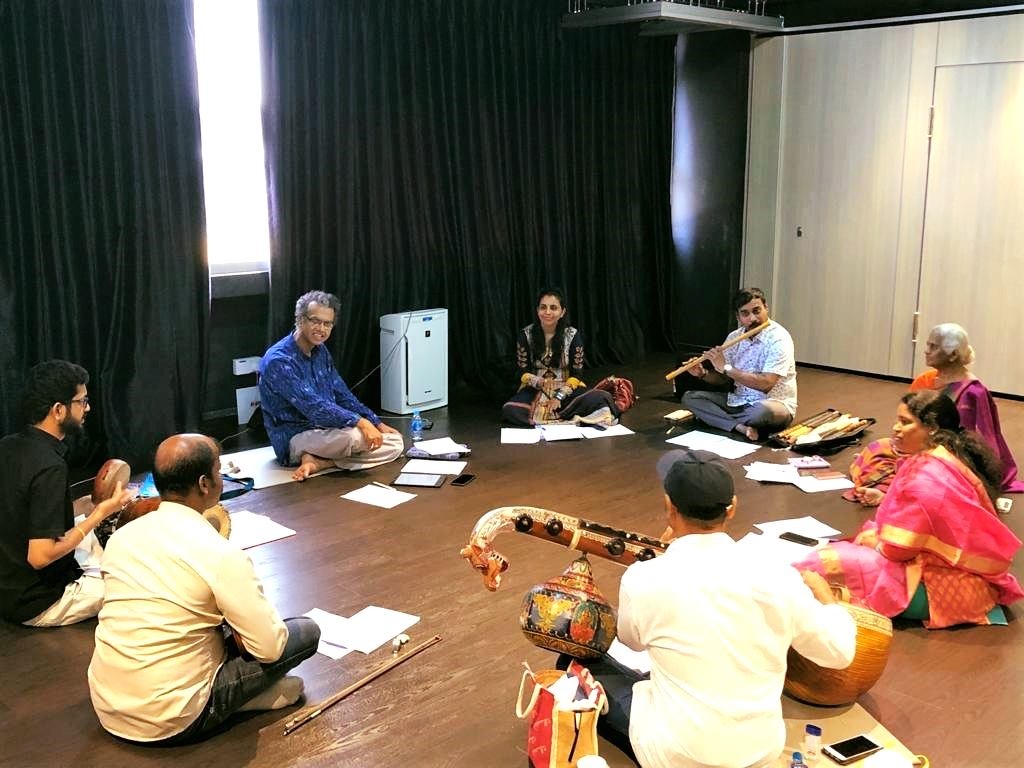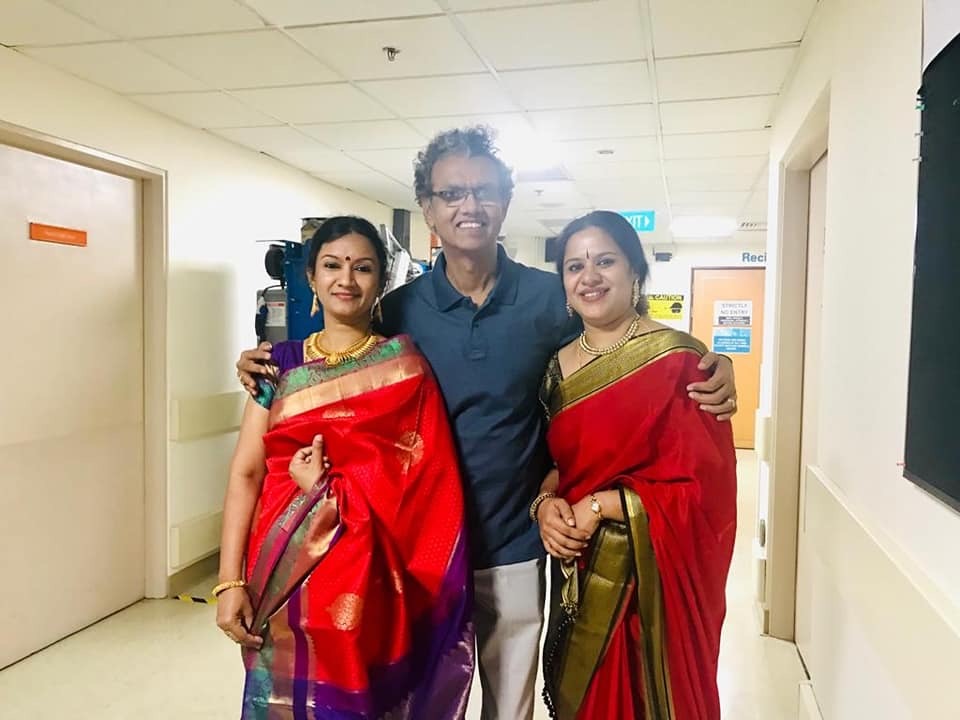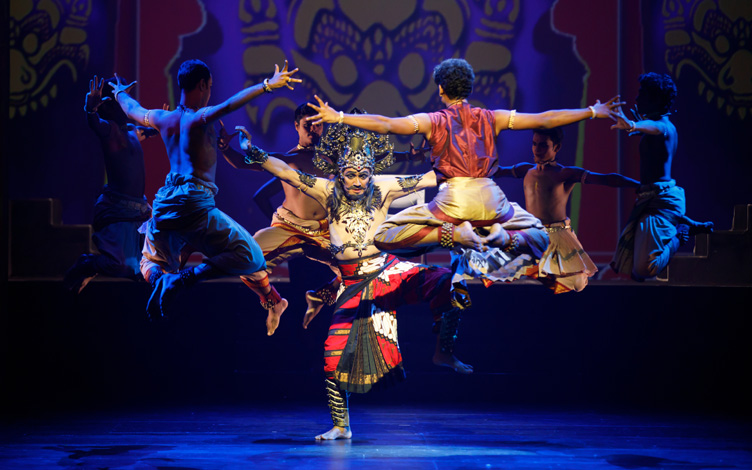Veteran South Indian classical music artist Dr Rajkumar Bharathi lost his voice at the peak of his career – for a singer, there is nothing more devastating. But his passion for music has lived on through other means, such as composing as well as mentoring the younger generation of musicians.
Read on to find out more about his musical journey, his impressions on music talents in Singapore, as well as what he finds interesting about his collaborations with Esplanade – Theatres on the Bay.
Connected to India: Your musical journey has been so inspirational, not only in terms of your achievements but also the way you rediscovered and found another way to connect with music after you were unable to sing. Could you share more about your journey?
Dr Rajkumar Bharathi: I may sound a bit philosophical, but it is closer to reality in my opinion. I am a firm believer that Creation has its own plans and ways of executing them. For instance, music is an expression of creation, in different ways, and it chooses its own messengers. It finds its own musicians.
So when I was singing, I was not even sure how I was singing, but it was an enjoyable experience. I thoroughly enjoyed it. When it was suddenly stopped midway and I became a full time composer, it was quite obvious that probably creation had other plans. Instead of making me sing, it now chose to make me a composer and get things done.
I am still connected to music, it is just changing my role from a vocalist to a music composer that’s all.
CtoI: You have also worked with the local dance scene in the capacity of a music composer. Pls share with us your experience in working on Anjaneyam – Hanuman’s Ramayana by Apsaras Arts and Marabu – The First Ripple by Bhaskar’s Arts Academy, which were both presented by Esplanade’s Kalaa Utsavam.
Dr Rajkumar: Let me first congratulate Esplanade for Kalaa Utsavam, because they tend to bring in the best talent available in India, and they have very good audience in Singapore. Esplanade is technically very highly equipped and I think anyone would like to come and perform here.
Why I am saying this is, both productions Anjaneyam and Marabu were high quality productions. You may have ideas, but you need the infrastructure to put them on stage. Anjaneyam was a very huge production because there were some 150 dancers with which we were working, and we had extremely capable people handling their different areas. For instance we had very good dancers taking care of the dance. I had a very good team of brilliant musicians who could deliver what was required of them. We had very good sound engineers, who were from the local engineering team in Esplanade.
So it requires a set of people who can do their jobs very well. Esplanade gave a brilliant platform, all the necessary technical support, and we had very good dancers, and the best choreographers. So when everything combines ,you really get a gem of a production.
Same thing happened in Marabu also. Of course the number of dancers were less according to the theme but it was staged on three consecutive days, The other interesting aspect was that we had drama and other elements in Marabu which was present in Anjaneyam. In that way, we had a lot of variety.
So I always found it interesting to work with such projects because all these projects are really huge projects.
CtoI: Under your mentorship for Raga Carnatic Music Mentorship, Esplanade presented Anandham – Lyrical Beauty of Tamil Poetry and Abhinaya – musical expressions of dance. How did you conceptualise these shows?
Dr Rajkumar: The themes were so interesting, as they made me think again because the productions needs to be presented in a form which will be both educative and entertaining to the audience.
Team Anandham was very unique because they wanted to present a concert style performance, but not the regular lyrics of the trinity of the Tamil composers. We chose the Thevaram, Thirupugal that was unique in that way. We had to make some small adjustments, like if it were a Thevaram or Thirupugal method Singing, it has to be slightly modified as it has to be presented on that concert platform in the present day scenario. So again, it was an interesting experience. How to make it look like a concert item. That was the interesting thing about Anandham.
Normally songs are always associated with live dancers. But for Abhinaya, there were songs but no dance. Therefore, it is all the more important that music is presented in such a way that people can understand when they listen to the song. We had to help them imagine how would it be if the music was presented in the visual medium also.
CtoI: As an artist with several years of concert experience, please share with us the challenges of garnering an audience for Carnatic music. How does this series attempt to give a different experience of enjoying Carnatic music to the audience?
Dr Rajkumar: You are right to say that. It is not easy to garner audience for Carnatic music. Normally what we do is, we look at the audience, and the ambience and then accordingly, choose our themes. If it is a very elite group, we present a very in-depth programme, which has information, for both, a layman and a connoisseur of music.
If it is for a temple festival , it is more generic because many people may be willing to listen to music, but they may not know the nuances of Carnatic music. So accordingly, you change the style of presenting Carnatic music.
Likewise, when you choose a theme here, as in Anandham and in Abhinaya, again you have to choose it in a way that is both educative and entertaining. When you present such themes, it also sparks curiosity and inquisitiveness in the audience.
From our side, we have to match their curiosity, and because there is some suspense here and there, it is always interesting.
CtoI: Do you have any advice for Singapore’s aspiring musicians?
Dr Rajkumar: It is my common advice to any musician, not only here but anywhere. The artists here are really dedicated and willing to work hard. These are the two qualities necessary for any upcoming artists.
And with proper guidance, all you need is people who are experienced and are willing to share their experience and knowledge to the budding musicians. I am sure with proper guidance, and coupled with their already existing mindset of hard work and dedication, they will put up a good show and the talents will really blossom.
CtoI: If you were to touch on the essence of Carnatic music to a lay person, what would you say?
Dr Rajkumar: In my opinion, Carnatic music is a form of music which tries to deal with the inner being. There are many forms of music which will excite you. You will feel like dancing, singing, that is one level of music.
But I think Carnatic music is a form of music which will try to transcend that aspect in you and try and reach you inwardly, so that you find a sense of peace and joy when you listen to it. And that is the ultimate thing and purpose of music – to lose yourself in it. It is not only entertainment. There is another side to it, which makes you feel peaceful.
This is the primary purpose of Carnatic music, for you to feel at peace and have a sense of joy. I think that is the essence and purpose of Carnatic music.






